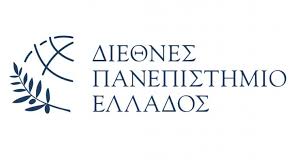My approach is to examine archaeological finds from Scythian burials in kurgans of the North Black Sea shore. Research area is going to cover such aspects as: relations between the Greeks and the Scythians, cultural and economic interactions of colonists with local tribes, cultural transmission between them. Pilgrims and nomads appeared to live in close vicinity (quite peaceful I may say), thus they could not keep their traditions and culture pure from foreign influence (this is proved though archaeological finds). Already found artifacts are categorized in three groups: · Objects imported from the Greek mainland · Objects manufactured at Greek workshops of the BS colonies made particularly for Scythian customers · Objects almost exclusively originated from the local Scythian workshops Hence, my basic concern is to analyze objects found in Northern Black Sea shore kurgans, and to make a comparative study of Scythian and Greek workshops, and artifacts. Looking through history books I have found many articles mentioning the collision of civilized and barbarian worlds. Eventually they came to collaboration which appeared to be somehow useful in different meanings. Much of what we know about Scythians is based on accounts by Herodotus, who wrote about the Scythia in the 5th century B.C.. Other information about them has been gleaned from archeological excavations and accounts from other Greek historians. Staring around 800 B.C., the Scythians thundered across the central Asian steppes, and within a few generations, their art and culture had spread to the steppes of central Asia and Europe. They preceded the Huns, Turks and Mongols by many centuries. Never constituting an empire, they were a network of culturally similar tribes that ranged from Siberia to Egypt almost 3,000 years ago and faded away around A.D. 100. The Scythians were not a unified group but rather a confederation of related, warring nomadic tribes. The Scythians did not have a written language It is believed that they spoke an Indo-European language similar to Persian. The Scythians’ kept in awe neighbor people, among which you can find Greeks and Persians. Herodotus wrote about their violent burial customs, including human sacrifice and drug-fueled rituals. He speculated that they came from mountains far to the east, in the “land of the gold-guarding griffins. Regarding the impression of fierce and same time exotic tribe of Scythians, scholars even believe that the Biblical prophet Jeremiah was referring to them when he warned the Israelites that warriors would come who "are cruel and have no mercy; their voice roareth like the sea and they ride upon horses, every one put in array, as men for war against thee." Many aspects of Scythian history and daily life are still veiled in mystery. They had no written language, no one knows exactly where they came from or why their empire collapsed. Historians do not even known if they had a capital or not, and if it did exist, where was it? Some Russian scholars 3 even tend to believe that there was no capital at all. Perhaps it was wherever the king happened to be. It is believed that the Scythian worship creatures depicted in their art—stags, fish, and mythological griffins—and that these animals had magical meanings. Fire worship was a part of the burial ritual for Scythian and other horsemen. Scythian purified graves with torches. The more mystery fogs around these people the more assumptions tend to appear, both credible and openly provocative. Except for Herodotus writings we can only see Scythian culture through tumulus and burial gifts found in situ. For my research I want to cover finds from Melgunov, Soloha, Tolstaia mogila, Seven Brothers, Kul – Oba kurgans. Though Seven Brothers is more to be Western Black Sea shore, I still want to include it due to numerous finds and publications. These burials are the most studied till now and various bibliographies are available. On other subject I plan to visit Crimean site during the summer 2013 and hope to find positive response from local museums and scholars with providing needed materials for my thesis. After carrying out this research for 3 months which is not that significant amount of time though, I still dare to complete a comprehensive dissertation by September 2013. Concerning bibliographical sources I plan to use are English, Ukrainian and Russian speaking sources, which I have found available in my disposal till this time you may find further. 4

